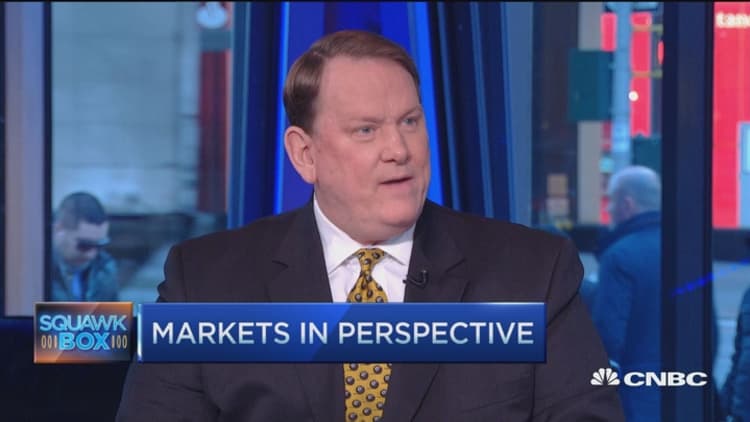
S&P Capital IQ's Sam Stovall on Tuesday looked to market history to handicap what the worst January for stocks since 2009 might mean for the rest of the year.
Let's get the bad news out of the way, because the chairman of the S&P Investment Policy Committee actually went on to be quite optimistic.
"We're seeing an earnings recession. And 75 percent of the time earnings recessions have preceded or accompanied economic recessions," Stovall told CNBC's "Squawk Box."
Read More Exxon's profit tumbles 58% as low crude hurts
However, he leaned toward the underdog 25 percent odds.
"What makes me feel that we could turn ... lemons into whiskey sours is when you look to economic growth," he said. He predicted 2.7 percent growth for 2016, an unemployment rate of 4.6 percent and wage growth of over 3 percent by year's end, and inflation around the Federal Reserve's target of 2 percent.
"We think that's actually going to improve the investor ability to start spending some of that money," Stovall said. "Even if we have all four of the [Fed interest] rate increases in each of the coming four quarters, that's going to put the fed funds rate at 1.25 percent. With inflation at 2.1 percent, we're still at a net negative of real rate environment."
Expectations calling for four Fed rate hikes in 2016 have been dwindling, because of the new year market turmoil, plummeting oil prices and concerns about what a slowdown in the Chinese economy might mean for the U.S. recovery.
Wall Street was under pressure early Tuesday, again feeling the heat from depressed oil prices, which weredropping more than 4 percent in morning trading, adding to Monday's nearly 6 percent decline.
Ahead of Tuesday's trading, the Dow Jones industrial average and the Nasdaq composite were in correction territory, defined by drops of more than 10 percent from recent highs. The , however, narrowly remained out of a correction.



